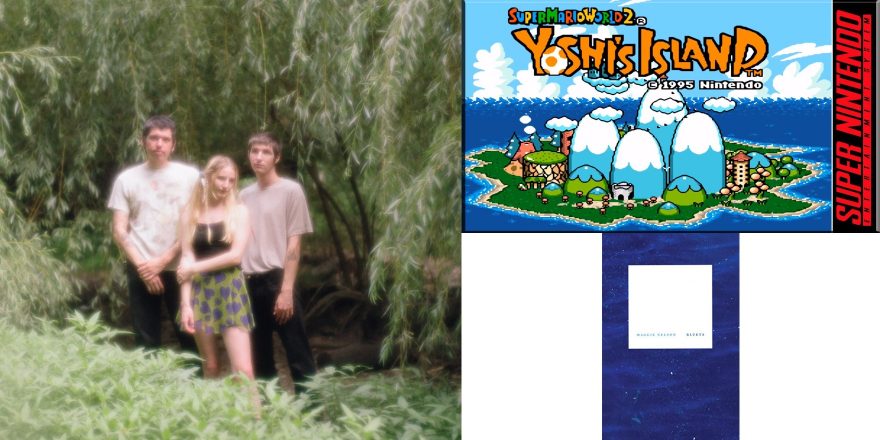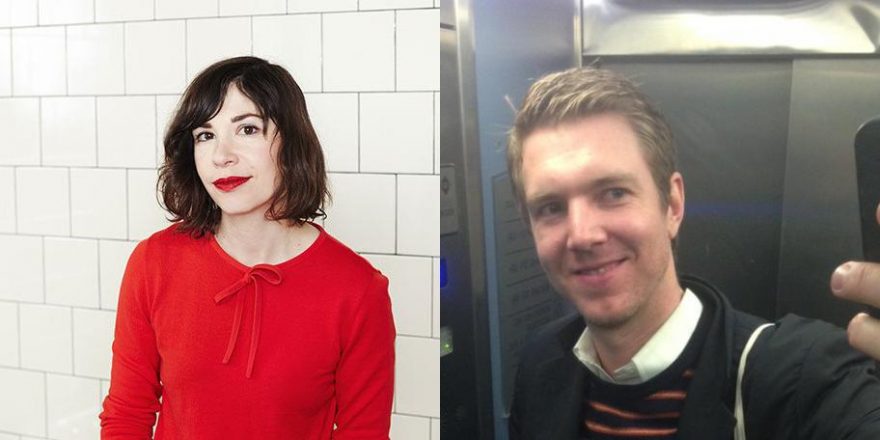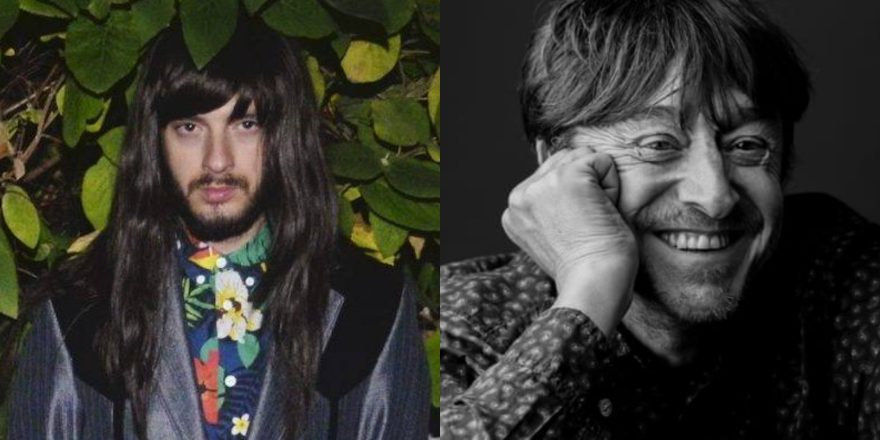I think there’s an assumption that everyone in the band has their own musical journeys, and we’re all going to bring in what filters out of that. For years, we’ve had this collaborative playlist that had, like, 400 songs on it, or something ridiculous like that. In the writing of these songs, we were always in musical conversation with each other — me and the drummer, Jessy Reed, send songs to each other all day long. So there’s this tacit understanding of where we’re all coming from, just because we all know each other so well in that way.
The way we write changes every time. This song in particular, “Margaret” was kind of my baby. I did almost all of it, save for the bridge, which was a collaborative effort. I brought in pretty much everyone’s parts — I did the lyrics, I did the arranging, and then when it came to recording, I did all the production stuff as well. Except when it came to the bridge of the song, I was literally like, “You guys, I’m tapped out on this. This will be the extent of my contribution to this song, and I trust that you all will do the bridge and finish the song.” And that’s what sealed it as a Gypsum creation.
I think the songwriting process is an invitation to be curious. If I’m coming up with a song and I’m not trying something new, then what’s the point? It’s my goal to use composition and songwriting as a vehicle to expand my musical horizons. So there’s not really a formula to it. I’m always going to be reaching for new techniques, or pulling from different songs a part that I like and asking how I can use it in something I’m doing.
I was at a Combo Chimbita show, and the guitarist was playing these lines with dyads, which is just two notes. I just thought it was fresh and cool. When you’re using dyads, it does have melodic and harmonic information in it, but because it’s so simple you can superimpose a lot of harmony over it. So I was just drawn to that, especially because I haven’t heard anyone use anything like that in a long time. I went home and was practicing guitar, just keeping dyads in mind and messing around with that, and came up with that first riff. I’m kind of playing dyads up and down a D minor chord. Because of that, I layered the next part, which is mostly an arpeggio of a C major chord. Those two chords can kind of exist together; they’re just really simple chords that end up creating a really nice harmony. The whole song is pretty simple — harmonically speaking, it’s really only three chords. So that gave us a lot of room to play around with textures and the sonic feelings around it, rather than relying on a lot of rhythmic stretching or really dense chords, like you can find in some of our other songs.
I pulled from Sleater-Kinney’s “Get Up” for the vocals. I’m always really into ‘90s style production, where the vocals are just dry as fuck. Although the song didn’t end up that way — there’s definitely a lot of reverb — I kept in mind how Sleater-Kinney was performing the song. Reverb was added later, but I wrote the lyrics and performed the song under the expectation that they were always going to be dry, so there’s a bit of a rhythmic quality to the vocal performance.
I also pulled from Khraungbin’s “Evan Finds the Third Room.” One thing I latched onto with that was this very specific part where they just say, “yes” — it’s just one gang vocal moment. I really like how they did that, so when we were recording and doing a bunch of post-production stuff on the song, every time I say “Margaret” at the beginning of a phrase, I doubled it a couple times. So that’s a little tiny influence that I added to the song that I feel like was really cool. It’s a very disco thing to do.
I looked to “Something to Remember Me By” by the Horrors for production ideas. There’s a whole bunch of weird shit going on in this song. So much of it is these sound effects — large swaths of that song are just pure swirling noise and sound, and that’s something that I’m a huge sucker for. I feel like it could be kind of a corny technique to play things backwards, but I love it. When we were doing demos of the song, I was just sitting at home one day, futzing around on Pro Tools, and I was like, I wonder what would happen if I took some of these stems and reversed them… So I did that — I took a little chunk of the drum demo we had done and reversed it, and I did the same thing with some of the guitar parts. Then I have this cool sound effect part for it, which is really present in the bridge and the outro.
It was really tricky in recording to go back and do it, because it was never, ever going to be the same as what it sounded like in the demo. I definitely had a case of demo-itis where I was very attached to what it sounded like. But I had to relieve myself of that, because we went into the studio, and part of creating a lot of those sound effects was running it through outboard gear. That just changes it forever, and there’s no going back and editing like there would have been in Pro Tools. So I then had to manually go back and figure out how to line everything up again while it was going backwards, which took a long time. But it was worth it. I love being able to use those techniques — turning actual knobs instead of clicking “OK” inside the computer. So that was just pure candy for me.
Oftentimes, I’ll write a song, and I’ll feel like it’s a song that I’ve addressed to myself, and I haven’t quite pulled out the meaning of it. I’m interested as the years go on, if I ever press play on that song again, what it might mean to me then. I very much enjoy using literature as a way to inspire songwriting, and at the time I was writing “Margaret,” I was reading the Joan Didion essay “Notes From a Native Daughter.” Also being from California, I was just trying to crack the Joan Didion code, which often feels elusive to me. There’s a poem at the end of the essay:
Margaret, are you grieving
Over Goldengrove unleaving?
It is the blight man was born for,
It is Margaret you mourn for.
It’s about growing up and reflecting, and realizing that who you were in the past isn’t there anymore. Writing the lyrics was kind of a meditation on that. It’s not necessarily something I had in mind while I was making the production choices — I wasn’t thinking, This guitar strum will be symbolic of this particular feeling that I have, other than a sweeping notion of things moving backwards. One could argue that there’s an element of wanting to feel like time is passing in this song. Or feeling somewhat atmospheric, just kind of setting the stage for a dreamscape. Because ultimately, I feel like this song is a bit of a meditation for me.
I really loved writing this song, and I’m grateful to my bandmates for wanting to contribute to it.
As told to Annie Fell.







